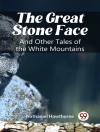In ‘The Well at the World’s End, ‘ William Morris crafts a richly woven narrative that intertwines myth, romance, and adventure within a dreamlike medieval setting. The novel follows the quest of a young man named Ralph as he journeys through fantastical landscapes in search of a mythical well said to grant eternal happiness. Morris’s prose is lyrical and evocative, utilizing archaic language and intricate descriptions to transport readers to a world reminiscent of Arthurian legends. This literary work stands as a significant contribution to the genre of fantasy, reflecting the ideals of the Arts and Crafts movement and Morris’s belief in the transformative power of art and beauty. William Morris, a preeminent figure in the late 19th-century English arts, was as much a poet and designer as he was a political activist and social reformer. His deep appreciation for craftsmanship and medieval aesthetics informed his literary works, driven by a desire to revive the spirit of a bygone era in a rapidly industrializing society. This novel, published in 1896, encapsulates his vision of a harmonious world where beauty and simplicity reign over the chaos of modern life. Readers seeking to immerse themselves in a narrative that transcends mere escapism will find ‘The Well at the World’s End’ an enriching experience. Morris’s exploration of love, ambition, and the quest for fulfillment resonates deeply, inviting contemporary readers to reflect upon their own pursuits of happiness amidst the complexities of modern existence. This book is an essential read for anyone drawn to fantasy literature that is both profound and aesthetically engaging.
เกี่ยวกับผู้แต่ง
William Morris (1834–1896) was a man of multifarious talents: an English textile designer, poet, novelist, translator, and social activist who played a significant role in propagating the British Arts and Crafts Movement. Celebrated for his contributions to decorative arts and his early advocacy for socialism in Britain, Morris is also renowned in literary circles for his fantasy novels. Among these, ‘The Well at the World’s End’, published in 1896, is a seminal work that has inspired a generation of fantasy writers, including J.R.R. Tolkien and C.S. Lewis. It is a rich tapestry of chivalry and adventure, embodying Morris’s archaic prose style and weaving themes of romance and heroism into an imagined medieval world. Morris’s literary oeuvre is marked by a synthesis of his socialist principles and a romantic revival of Gothic and medieval motifs, employing a language that harks back to the idyllic and mythological past. His other significant works include ‘The Wood Beyond the World’ and ‘News from Nowhere’, which further solidify his position as a visionary and storyteller. An adherent of the Pre-Raphaelite Brotherhood, Morris’s artistic output and political engagements were informed by his belief in the socialist doctrine and the capability of art to transform society. Through his interdisciplinary pursuits, Morris established an enduring legacy, shaping both literary form and social thought in the late Victorian era.












